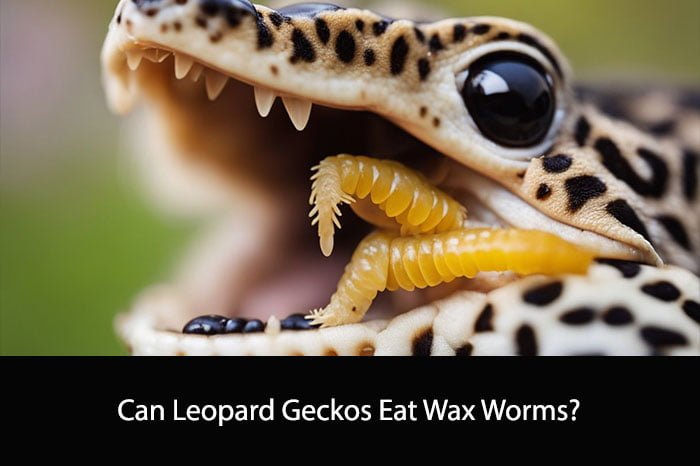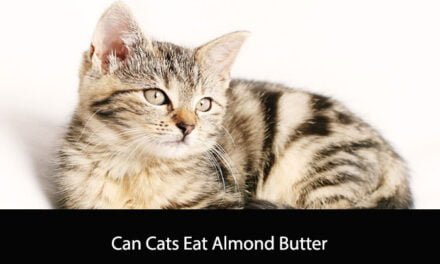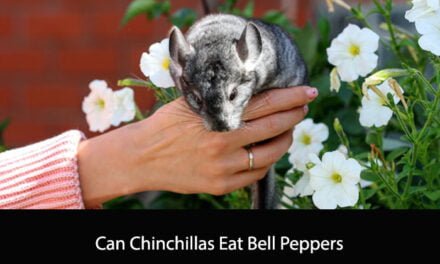Leopard geckos are a popular pet reptile due to their docile nature and easy care requirements. As with any pet, it is important to provide them with a balanced and nutritious diet. Wax worms are a common feeder insect for leopard geckos, but can they eat them?
Wax worms are the larvae of the wax moth and are high in fat and protein. While they can be a tasty treat for leopard geckos, they should not make up a large part of their diet. Overfeeding wax worms can lead to obesity and other health issues in leopard geckos. It is important to offer a variety of feeder insects and to use wax worms as an occasional treat.
Dietary Benefits of Wax Worms for Leopard Geckos
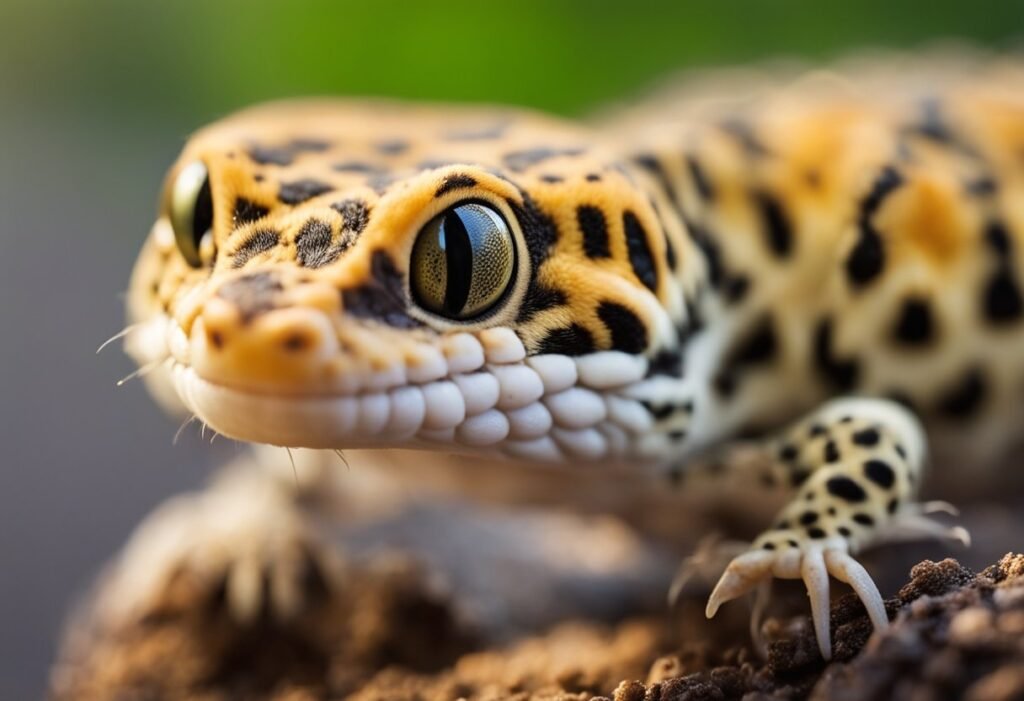
When it comes to feeding your leopard gecko, it’s important to provide a balanced diet that includes a variety of food items. One such food item that you might consider adding to your leopard gecko’s diet is wax worms.
Nutritional Value
Wax worms are a good source of fat and protein, which are essential nutrients for leopard geckos. In fact, wax worms are higher in fat and lower in protein compared to other feeder insects like crickets and mealworms. This makes them a great option for leopard geckos that require a higher fat content in their diet.
Wax worms also contain important vitamins and minerals that are essential for leopard geckos. They are a good source of calcium, which is important for maintaining healthy bones and preventing metabolic bone disease. They also contain vitamin B12, which is important for nerve function and energy metabolism.
Feeding Frequency
While wax worms can be a nutritious addition to your leopard gecko’s diet, they should be fed in moderation. Due to their high fat content, feeding too many wax worms can lead to obesity and other health problems. We recommend feeding wax worms as an occasional treat, rather than as a staple food item.
In general, feeding your leopard gecko once every two to three days is sufficient. However, the frequency of feeding will depend on your leopard gecko’s age, size, and activity level. It’s important to monitor your leopard gecko’s weight and adjust their feeding schedule accordingly.
In summary, wax worms can be a beneficial addition to your leopard gecko’s diet when fed in moderation. They provide important nutrients like fat and protein, as well as vitamins and minerals. However, it’s important to feed them in moderation and to monitor your leopard gecko’s weight to prevent health problems.
Potential Risks of Feeding Wax Worms

When it comes to feeding leopard geckos, wax worms are often considered a treat. However, it is important to be aware of the potential risks associated with feeding wax worms to your gecko.
Obesity and Fatty Liver Disease
Wax worms are high in fat and low in nutrients, which can lead to obesity and fatty liver disease in leopard geckos if they are fed too frequently or in large quantities. These conditions can be serious and even life-threatening if left untreated.
To prevent obesity and fatty liver disease, it is recommended to feed wax worms in moderation as a treat, rather than as a staple part of your gecko’s diet. It is also important to provide a balanced diet of insects and other foods that are high in nutrients to ensure your gecko receives proper nutrition.
Addictive Nature of Wax Worms
Another potential risk of feeding wax worms to leopard geckos is their addictive nature. Wax worms are known to be highly palatable and can be difficult for geckos to resist. This can lead to overfeeding and a lack of interest in other foods, which can result in nutritional deficiencies.
To avoid this, it is important to limit the frequency and amount of wax worms given to your gecko. It is also recommended to offer a variety of foods to encourage a balanced diet and prevent your gecko from becoming too reliant on one type of food.
In summary, while wax worms can be a tasty treat for leopard geckos, it is important to be aware of the potential risks associated with feeding them. By feeding wax worms in moderation and providing a balanced diet, you can help ensure the health and well-being of your gecko.
How to Feed Wax Worms to Leopard Geckos

Wax worms are a popular treat for leopard geckos due to their high fat content and soft exoskeleton. However, it is important to feed them in moderation as they are not nutritionally balanced and can lead to obesity if overfed. Here are some tips on how to feed wax worms to your leopard gecko.
Serving Size
We recommend feeding wax worms as an occasional treat rather than a staple food item. A good rule of thumb is to offer them once or twice a week in small quantities. The appropriate serving size will depend on the size and age of your leopard gecko. As a general guideline, we suggest feeding no more than 2-3 wax worms per feeding for adult geckos and 1-2 worms for juveniles.
Preparation and Presentation
Before feeding wax worms to your leopard gecko, it is important to ensure they are healthy and free of parasites. We recommend purchasing them from a reputable source and inspecting them for any signs of mold or discoloration.
To make the wax worms more appealing to your gecko, you can offer them in a shallow dish or on a feeding tong. Some geckos may be more inclined to eat them if they are moving, so you can gently wiggle the worms with the tongs to stimulate their prey drive.
It is also important to remove any uneaten wax worms from the enclosure after feeding to prevent them from burrowing into the substrate and causing potential health issues for your gecko.
Overall, feeding wax worms to leopard geckos can be a fun and rewarding experience for both you and your pet. Just remember to offer them in moderation and ensure they are healthy before feeding.
Alternatives to Wax Worms
Other Feeder Insects
While wax worms are a popular feeder insect for leopard geckos, they should not be the only insect in their diet. It is important to provide a variety of feeder insects to ensure a balanced diet. Here are some alternative feeder insects that can be fed to your leopard gecko:
- Crickets: Crickets are a staple feeder insect for leopard geckos. They are high in protein and easy to find at most pet stores. It is important to gut-load crickets before feeding them to your gecko to ensure they receive proper nutrition.
- Mealworms: Mealworms are another popular feeder insect for leopard geckos. They are high in protein and fat, making them a great addition to your gecko’s diet. However, it is important to limit the number of mealworms your gecko eats as they can be difficult to digest.
- Dubia Roaches: Dubia roaches are a nutritious feeder insect that are becoming increasingly popular among leopard gecko owners. They are high in protein and low in fat, making them a great addition to your gecko’s diet.
Commercial Diet Options
In addition to feeder insects, there are also commercial diet options available for leopard geckos. These diets are formulated to provide a balanced diet for your gecko and can be a convenient option for owners who do not want to deal with live insects. Here are some commercial diet options for leopard geckos:
- Repashy Crested Gecko Diet: This diet is formulated for crested geckos, but can also be fed to leopard geckos. It is a powdered diet that can be mixed with water to form a paste. It contains a variety of fruits, insects, and vitamins to provide a balanced diet for your gecko.
- Pangea Fruit Mix Complete: This diet is also formulated for crested geckos, but can be fed to leopard geckos. It is a powdered diet that can be mixed with water to form a paste. It contains a variety of fruits, insects, and vitamins to provide a balanced diet for your gecko.
- Zoo Med Natural Grassland Tortoise Food: This diet is formulated for tortoises, but can also be fed to leopard geckos. It is a pellet diet that contains a variety of vegetables and vitamins to provide a balanced diet for your gecko.
Monitoring Your Leopard Gecko’s Health
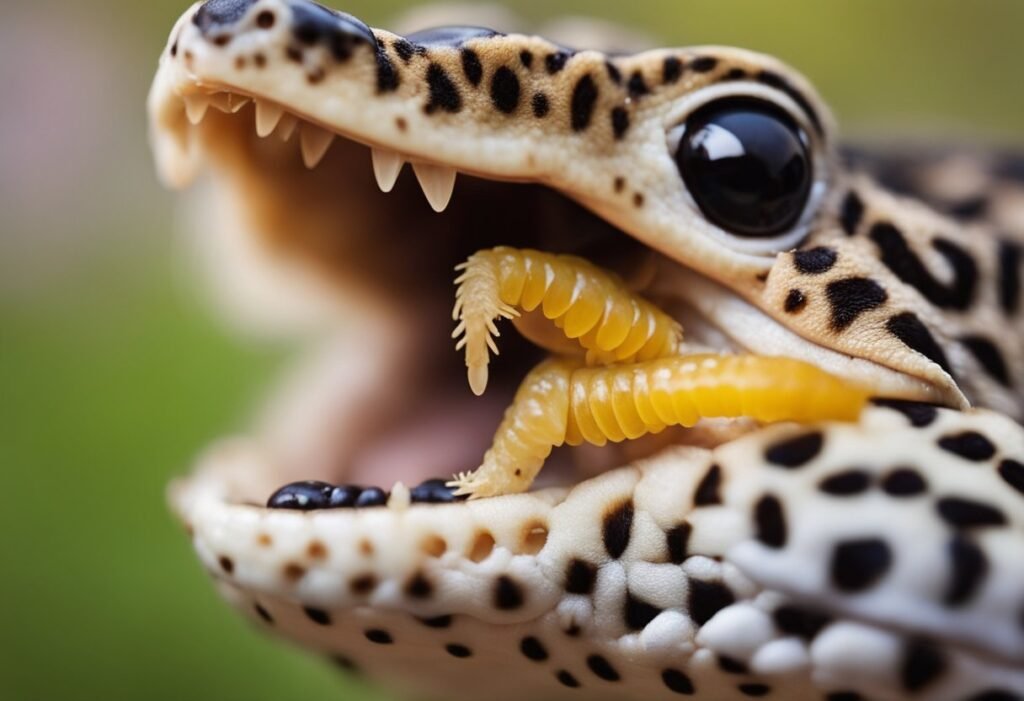
Weight Tracking
Monitoring your leopard gecko’s weight is an essential part of maintaining their health. We recommend using a digital scale to weigh your gecko regularly. The frequency of weighing your gecko depends on their age and health status. For juvenile geckos, we recommend weighing them every week, while adult geckos can be weighed every 2-4 weeks.
A healthy adult leopard gecko should weigh around 50-70 grams. If your gecko’s weight is consistently below or above this range, it may be a sign of an underlying health issue. In such cases, it is best to consult a veterinarian who specializes in reptiles.
Behavioral Observations
Observing your leopard gecko’s behavior is another crucial aspect of monitoring their health. Some common behaviors to look out for include lethargy, loss of appetite, and abnormal shedding. If you notice any of these behaviors, it may be a sign of an underlying health issue.
It is also important to monitor your gecko’s bowel movements. A healthy gecko should defecate regularly, and their feces should be well-formed and free of any abnormalities. If you notice any changes in your gecko’s bowel movements, it may be a sign of a health issue.
In conclusion, monitoring your leopard gecko’s health is crucial for their well-being. Regular weight tracking and behavioral observations can help you identify any potential health issues early on, allowing you to take appropriate action.
Frequently Asked Questions
Are wax worms a suitable food for leopard geckos?
Yes, wax worms can be a suitable food for leopard geckos. However, they should not be the primary food source in their diet. Wax worms are high in fat and low in calcium, so they should be fed sparingly and as a treat.
What types of worms can leopard geckos safely consume?
Leopard geckos can safely consume a variety of worms, including mealworms, superworms, and crickets. It is important to ensure that the worms are appropriately sized for the gecko and that they are gut-loaded (fed nutritious food) before feeding them to the gecko.
How often should leopard geckos be fed wax worms?
Leopard geckos should be fed wax worms sparingly, no more than once or twice a week. Overfeeding wax worms can lead to obesity and other health problems.
What are the nutritional benefits of wax worms for leopard geckos?
Wax worms are high in fat and protein, which can provide a boost of energy for leopard geckos. However, they are low in calcium and other essential nutrients, so they should not be a staple in the gecko’s diet.
Can wax worms be a staple in a leopard gecko’s diet?
No, wax worms should not be a staple in a leopard gecko’s diet. While they can provide some nutritional benefits, they are not a balanced food source and can lead to health problems if overfed.
What should be considered when feeding wax worms to leopard geckos?
When feeding wax worms to leopard geckos, it is important to ensure that they are appropriately sized for the gecko and that they are fed sparingly as a treat. It is also important to provide a balanced diet that includes a variety of other insects and potentially some fruits and vegetables. Finally, it is important to monitor the gecko’s health and adjust their diet as necessary to ensure they are getting all of the necessary nutrients.

